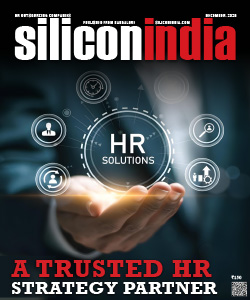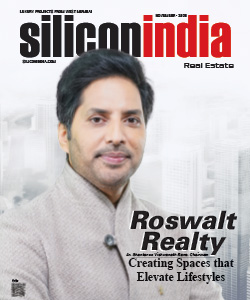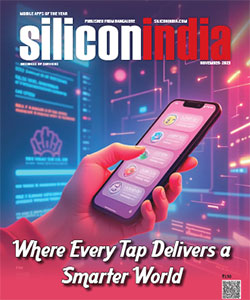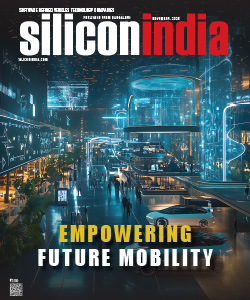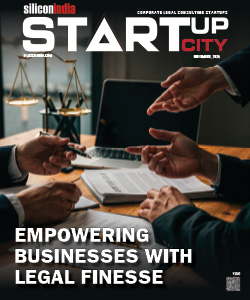India Inc in the Metaverse of Opportunities
By Emmanuel Christi Das, Editor, siliconindia | Wednesday, 11 May 2022, 12:53 IST

Over the past couple of months, no one has quite pinned an accurate and single definition of Metaverse. Yet, we have witnessed a number of examples of Metaverse around us. Or at least, if you cared to notice.
This year's Valentine’s Day was out of this world experience, LITERALLY! Mondelez India, a multinational confectionery, food, holding and beverage and snack food company based in Chicago, created a metaverse experience of a dinner date on the moon! With augmented reality (AR), the couples in India were able to step into a portal and take a walk on the moon. Over a million other consumers sent out secret messages to their loved ones that could only be opened on virtual moon. Inarguably the first-ever dinner date on metaverse in India, it was intelligently titled, 'How Far Would You Go To Make Them Blush?'.
In IPL 2022, Nestle India jumped on the metaverse bandwagon and is offering cricket fans an immersive experience on metaverse through its chocolate brand, Munch. Via limited edition packs, the F&B major is featuring players from four IPL franchises. One needs to scan the Munch packs which will take consumers into an AR experience of cricket games and let interact with digital avatars of players. Turns out, fans can click pictures with players through attractive AR filters.
Tanishq has launched 'Rivaah', its bridal collection in metaverse, wherein participants can even try the piece in ‘Rivaahverse’ using QR codes on mobile phones.
Indian corporate have come to terms with the bold new world of Metaverse. It is that one road untraveled for most executives, almost like the Internet in the 1990s. It's ready to be applied in more forms than we could imagine, explore newer business models than that exists, and implementing in use cases in several ways to engage stakeholders—be it customers, suppliers, dealers or employees. These endless possibilities have the race open for first-mover advantage, for which an ecosystem of platform enablers, content creators and Web 3.0 communities are laying the blueprint to scale exponentially. Not failing to mention, big money is set to back this dream. Data from market research firm Venture Intelligence shows, funding in local sectoral start-ups touched $520 million in 2021 from $9 million in 2019.
Goldman Sachs calls Metaverse, an 'Up for Grabs' $8 trillion global opportunity in five years, up from $100 billion today. In fact, India's own Metaverse-NFT economy—already worth an estimated $50-100 million annually—is picking momentum rapidly (expected to touch $100 billion by 2025). On the ground action today, is larger than that value.
India has 65% of its population under the age of 35. And behold, these are moments of truth for Indian corporate. Marketers can’t afford not to be on metaverse. The Gen-X spends over 80% of its time on digital platforms. While Web 2.0 took a decade to eventually find full-ledged use with marketers, with metaverse-led Web 3.0 knocking on their doors, they want to catch the bus in time, lest be left behind.
Clearly, the metaverse market is shaping up to offer a wide range of commercial opportunity to companies in multiple industries. Technology, media, and telecom companies are the biggest beneficiaries given that they will benefit directly by providing technological enablers, such as 5G, next-generation Wi-Fi or broadband networks, and new operating systems, app stores, and platforms to foster more content creation.
AR and VR tools are being actively explored and applied in a wide array of industries ranging from health care to industrial goods.
Even so, for consumers, there are abundant motivations for setting foot into the metaverse that extend far beyond gaming. In turn, the consumer-facing companies have the opportunity to provide:
• Redefined ways to shop, such as virtual storefronts, with virtual try-ons for both virtual and physical products- Van Heusen has one.
• Physical-virtual experiences or exclusive access to a brand’s events or concerts
• New ways to participate in m-worlds, such as co-creating assets and experiences, exchanging goods, or earning money
• Refreshed ways to interact with others, in communities built around particular interests or areas of exclusivity, for instance, or through experiences associated with the three previous examples
Here's the How to
To begin with, companies can start by introducing & familiarizing their respective organizations with the drastic potential impact of the metaverse. An assessment in the form of a imperative, of how the business may be positively or negatively affected by the convergence of the three trends: the emergence of m-worlds; improvements in AR, VR, and MR; and the ever-extending use of Web3 assets enabled by blockchain, can be useful. Post the assessment & identification, companies can then select areas of focus on the metaverse flywheel and potential use cases for their own operations or undertakings. All said & done, finally, they can decide on whether to become part of building this new infrastructure; or monetize content and virtual assets; or create B2B or B2C content, or even inward-facing experiences such as customer showrooms, virtual conferences, and remote collaboration solutions; or exert a pull on relevant audiences, both existing customers and prospects of interest including Gen Z consumers.
Not long belong Metaverse matures
It's a smart thing to remember that TECHNOLOGIES MATURE. In turn, the development of new applications and use cases typically accelerate. Let's not forget the short history of the internet itself, or mobile connectivity, or social media. Although the metaverse and the technologies influencing it are fairly young, how long do you think it will take to mature fully?

